Things to do in Cape Town
From museums and historic sites to scenic drives and beaches, Cape Town has plenty to offer visitors in the way of attractions and excursions. The open-top, hop-on hop-off sightseeing buses operate two routes, visiting sights in and around the central city. The routes also go further afield in the suburbs, providing an easy way to see many of the city's top attractions in one day.
The city centre is easy to navigate on foot, with Table Mountain and the city's gentle slope towards the sea providing points of reference and making it difficult to get lost. At the very least, visitors usually include a trip up Table Mountain in the cable car and many make time for an outing to Robben Island, Cape Point, the Winelands, and, of course, any one of the city's many magnificent beaches.
Summertime visitors rarely come to Cape Town without at least one day spent enjoying its Blue Flag-rated beaches, whether lounging with bronze gods in Camps Bay and Clifton, or snorkelling with penguins in Simonstown. There are many active pursuits available in Cape Town as well, including kayaking with whales in the Atlantic Ocean, hiking up Table Mountain or in the Tokai Forest, and paragliding from Signal Hill to Camp's Bay.
For those with a bit more time, there are many interesting museums that offer a glimpse into the apartheid era, such as the District Six Museum. An increasingly popular excursion is to one of the predominantly black townships which usually includes a look at community projects, a visit to a craft market and a drink at a local shebeen (township pub).
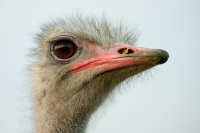
Cape Town Ostrich Ranch
For fun encounters with one of South Africa's oddest and most unique animals, the Cape Town Ostrich Ranch is a great bet. The ranch is a good family attraction, but having kids alo…
Cape Town Ostrich Ranch
For fun encounters with one of South Africa's oddest and most unique animals, the Cape Town Ostrich Ranch is a great bet. The ranch is a good family attraction, but having kids along is not necessary to enjoy the experience. Although it is possible to explore the ranch independently, most people choose to join one of the organised tours, which are conducted in English, Afrikaans, German, and French. Tours in other languages may be possible if organised in advance. Tours take about 40 minutes and include the museum, the leather factory, and encounters with the various ostriches and other animals on the farm.
Website www.capetown.travel/listing/cape-town-ostrich-ranch/
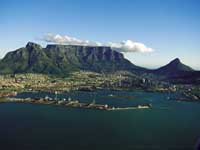
Table Mountain
Cape Town's most popular tourist attraction is also its most famous physical feature. The flat-topped mountain stands as a sentinel over the city, and has been proclaimed a nature …
Table Mountain
Cape Town's most popular tourist attraction is also its most famous physical feature. The flat-topped mountain stands as a sentinel over the city, and has been proclaimed a nature reserve, thereby protecting its diverse floral species. Some are unique to its slopes. The views of the city and coastline from the top of the mountain are quite spectacular in all directions. A Swiss-built rotating cable car carries visitors smoothly up the mountain and back, and the mountaintop is equipped with a restaurant and small gift shop, as well as many pathways and vantage points. It is possible to climb the mountain via different routes but inexperienced hikers should take care because Cape Town is prone to sudden weather changes.
Website www.tablemountain.net
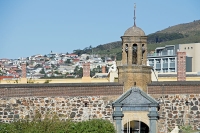
Castle of Good Hope
South Africa's oldest surviving colonial building, the Castle of Good Hope was completed in 1679. It replaced an earlier mud and timber fort built by the first Dutch Governor, Jan …
Castle of Good Hope
South Africa's oldest surviving colonial building, the Castle of Good Hope was completed in 1679. It replaced an earlier mud and timber fort built by the first Dutch Governor, Jan van Riebeeck. Situated adjacent to a parking lot and bus station in Buitenkant Street, its walls mark the original boundary of the seashore where the waves washed up against the fortifications. Its outside aspect is somewhat foreboding, but inside are some interesting features and collections that have been restored, offering a good insight into the early days of the Cape, when the castle was the centre of social and economic life. The complex is a pentagonal fortification with a moat and five bastions, each named for one of the titles of the Prince of Orange.
Website www.castleofgoodhope.co.za
South African Museum and Planetarium
The imposing South African Museum is dedicated to natural history and the human sciences, and contains a huge variety of fascinating exhibits. Among other things, visitors will enc…
South African Museum and Planetarium
The imposing South African Museum is dedicated to natural history and the human sciences, and contains a huge variety of fascinating exhibits. Among other things, visitors will encounter entire chunks of caves bearing rock art, and traditional arts and crafts from several African tribes. Astoundingly, the museum houses more than one and a half million specimens of scientific importance, including fossils that are almost 700 million years old. The vastness of the collection means that for every object on display, thousands more are kept in storage. Alongside the museum is the Planetarium, which has a changing programme of thematic shows involving the southern constellations. These two attractions are based in the lovely Company Gardens of Cape Town, which are also worth exploring.
Website www.iziko.org.za
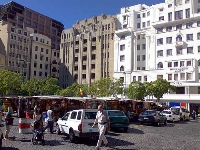
Greenmarket Square
Situated near the main train station in the Central Business District, Greenmarket Square is the perfect spot to observe South Africa's diverse population in all its hues and voice…
Greenmarket Square
Situated near the main train station in the Central Business District, Greenmarket Square is the perfect spot to observe South Africa's diverse population in all its hues and voices. Once the scene of slave markets, it now accommodates one of the city's most vibrant flea markets, where clothing, jewellery, trinkets, and souvenirs are on sale most days. Tourists and business people rub shoulders in the many sidewalk cafes that surround the busy cobbled square. Visitors should be prepared to haggle for the best prices at the market, and should be aware that touts are prevalent. Rain doesn't generally deter vendors, with most covering their stalls with tarpaulins in bad weather. Stalls generally start clearing up for the day in the late afternoon, though seldom before 3pm.
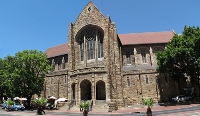
St George's Cathedral
Founded in 1901 and situated on Wale Street, Cape Town's Victorian Gothic style Anglican Cathedral is historically significant for hosting the enthronement of South Africa's first …
St George's Cathedral
Founded in 1901 and situated on Wale Street, Cape Town's Victorian Gothic style Anglican Cathedral is historically significant for hosting the enthronement of South Africa's first black archbishop, Nobel Peace Prize winner Desmond Tutu. The Cathedral is unique in that it became a political powerhouse in the struggle against Apartheid. Known as 'the people's cathedral', it began openly welcoming people of all races in the 1950s. This was a brave stand in the racially segregated society of the time. In subsequent years, the cathedral became the venue for many protest gatherings and vigils, and victims of forced removals were even accommodated here at times. As for architectural merit, the cathedral features some fine Gabriel Loire windows, including a magnificent Rose Window above the south transept.
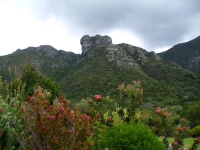
Kirstenbosch Botanical Gardens
The magnificent Kirstenbosch National Botanical Gardens lie just south of the city centre and cover a huge expanse of the rugged southwestern slopes of the Table Mountain Range. Ki…
Kirstenbosch Botanical Gardens
The magnificent Kirstenbosch National Botanical Gardens lie just south of the city centre and cover a huge expanse of the rugged southwestern slopes of the Table Mountain Range. Kirstenbosch was bequeathed to the nation by mining magnate Cecil Rhodes in 1895, and today contains a nursery, a research unit, a botanical library and more than 22,000 plants. Numerous paths meander through the gardens, including a Braille route for the blind. Nature lovers should note that the walks are full of lush shrubs and fynbos, the Cape's indigenous floral heritage. The gardens are indeed a natural wonderland, where visitors will find lots of space for picnics. In summertime, the delightful setting becomes the venue for Sunday evening open-air concerts.
Website www.sanbi.org/gardens/kirstenbosch
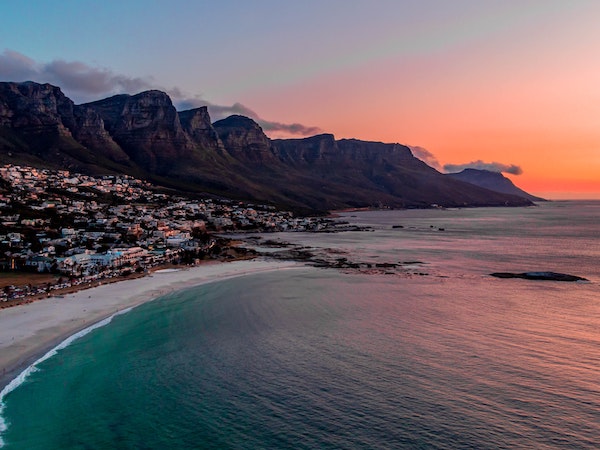
Cape Town Beaches
Cape Town has some of the world's most beautiful beaches. The most glamorous are on the Atlantic Coast, where the scenery is dramatic, and the water is cold. Camps Bay is perhaps m…
Cape Town Beaches
Cape Town has some of the world's most beautiful beaches. The most glamorous are on the Atlantic Coast, where the scenery is dramatic, and the water is cold. Camps Bay is perhaps most famous, tourists flock to its long, wide stretch of white sand and enjoy the many bars and restaurants nearby. Another favourite is Clifton, where four beaches are situated beneath the exclusive houses and apartments set into the cliff. Further south is the pristine Llandudno beach. A little further afield is False Bay, on the Indian Ocean side of the peninsular, where the water is noticeably warmer. The most popular beach for learning to surf in Cape Town is Muizenberg. For long walks and horse riding, the huge expanse of Noordhoek beach is ideal.
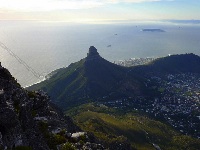
Robben Island
Robben Island is seven miles (11km) from Cape Town, and is easily seen from the shore. For nearly 400 years, this tiny rocky island was utilised as a place of banishment, exile, is…
Robben Island
Robben Island is seven miles (11km) from Cape Town, and is easily seen from the shore. For nearly 400 years, this tiny rocky island was utilised as a place of banishment, exile, isolation, and imprisonment for numerous categories of people ostracised by society, ranging from political protesters to lepers. During the years of Apartheid, Robben Island became synonymous with institutional brutality, as many freedom fighters, including the island's most famous resident, Nelson Mandela, were imprisoned here for more than a quarter of a century. Robben Island is now a museum symbolising the liberation and triumph of the human spirit. Regular island tours are conducted and last for around three and a half hours.
Website www.robben-island.org.za

District Six Museum
Until the 1960s, District Six was a vibrant district of Cape Town located close to the city centre and the harbour. The community was originally established as a mix of freed slave…
District Six Museum
Until the 1960s, District Six was a vibrant district of Cape Town located close to the city centre and the harbour. The community was originally established as a mix of freed slaves, merchants, artisans and immigrants, and developed a unique multiracial character. In 1966, the government declared District Six a 'whites only' area under the Group Areas Act and over 60,000 residents were forcibly moved to the outlying Cape Flats, a barren area several kilometres away, while most of their homes were flattened by bulldozers. Communities and families were uprooted and torn apart, and this moving museum serves to safeguard the memories and the spirit that was District Six.
Website www.districtsix.co.za
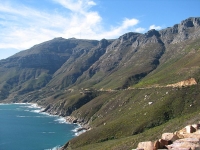
Chapman's Peak
Chapman's Peak Drive is one of the most spectacular coastal roads in South Africa and the world. It links the seaside community of Hout Bay to the Noordhoek Valley along the Atlant…
Chapman's Peak
Chapman's Peak Drive is one of the most spectacular coastal roads in South Africa and the world. It links the seaside community of Hout Bay to the Noordhoek Valley along the Atlantic Coast, and offers breath-taking views from along the narrow, winding road blasted into the cliffs. Started in 1915, the six-mile (9km) route took about seven years to complete and was built as a shorter, alternative route between Cape Town central and the South Peninsula. Many visitors use this scenic route to reach Cape Point Nature Reserve, situated at the tip of the Peninsula. But for many Capetonians, it simply comprises a breathtakingly beautiful commute to work.
Website www.chapmanspeakdrive.co.za
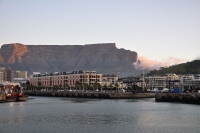
Victoria & Alfred (V&A) Waterfront
This working harbour, historical site, and shopping development has become one of Cape Town's most visited tourist attractions. The Waterfront offers everything from shopping malls…
Victoria & Alfred (V&A) Waterfront
This working harbour, historical site, and shopping development has become one of Cape Town's most visited tourist attractions. The Waterfront offers everything from shopping malls and crafts markets to live music and a variety of festivals throughout the year. It's also home to more than 70 eateries, ranging from pubs and fast-food outlets to five star restaurants. Those who fall in love with the Waterfront will be glad to know that there are several luxury hotels in the area. What's more, travellers can stroll down to the harbour to gaze upon the many boats and ships upon the waves.
Website www.waterfront.co.za
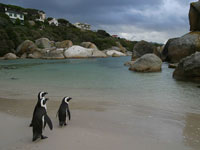
Simonstown and Boulders Beach
Simonstown is South Africa's principal naval base and lies about 25 miles (40km) from the city centre. The quaint suburb was built around a naval dockyard, and visitors will enjoy …
Simonstown and Boulders Beach
Simonstown is South Africa's principal naval base and lies about 25 miles (40km) from the city centre. The quaint suburb was built around a naval dockyard, and visitors will enjoy its well-preserved Victorian buildings, museums, sidewalk cafes, and local heroes. One such hero was a dog called, 'Just Nuisance', who joined the British navy and become their mascot when Simonstown was a British base. A statue of the beloved Great Dane can still be seen on the beachfront. A short distance from the town is Boulders Beach, famous for its protected colony of African Penguins. People watch the animals while on the beach as well as from viewing platforms.
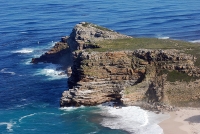
Cape Point
Most Cape Town visitors are keen to make the short, 40 mile (65km) daytrip from the city centre to the Cape of Good Hope Nature Reserve. The land at first appears bleak, but visito…
Cape Point
Most Cape Town visitors are keen to make the short, 40 mile (65km) daytrip from the city centre to the Cape of Good Hope Nature Reserve. The land at first appears bleak, but visitors will soon discover a region rich in floral diversity. They will also stand atop the towering promontory at the most southerly point of the Cape Peninsula. Those who wish to venture to the most southerly point of Africa will have to journey further to Cape Agulhas. Visitors can reach the viewpoint and lighthouse via a funicular, and watch thundering waves crash at the base of the cliffs below. Bird lovers and botany enthusiasts will enjoy exploring the reserve itself.
Website www.capepoint.co.za

Bo-Kaap
The Bo-Kaap (old Malay Quarter) was declared an exclusive residential area for the Muslim Cape Malays under the apartheid era's Group Areas Act of 1950, forcing people of other rel…
Bo-Kaap
The Bo-Kaap (old Malay Quarter) was declared an exclusive residential area for the Muslim Cape Malays under the apartheid era's Group Areas Act of 1950, forcing people of other religions and ethnicity to leave. The term 'Cape Malay' was originally used to describe the slaves from Malaysia, Indonesia, and various African countries who were imported to the Cape of Good Hope by the Dutch during the 16th and 17th centuries (rather than just to describe Malaysian slaves). Today, the area is still closely associated with the Muslim community and has a distinct and vibrant character. The colourfully painted houses, steep cobbled streets, mosques, minarets, and blend of Cape Dutch and Edwardian architecture also help make it culturally and historically interesting.
Website www.iziko.org.za/museums/bo-kaap-museum
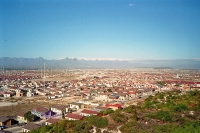
Township Tours
The N2 highway that connects Cape Town International Airport to the city is lined with townships, which consist of a mixture of shacks and solid buildings. During the days of apart…
Township Tours
The N2 highway that connects Cape Town International Airport to the city is lined with townships, which consist of a mixture of shacks and solid buildings. During the days of apartheid, people of colour were not allowed to live in the white suburbs and were relocated to areas away from the city. These tours allow visitors to experience how the majority of Capetonians still live. Guides, often residents, take visitors around to meet the people, see community projects, have a drink in a shebeen (township pub) and shop for local crafts. Each township has its own colourful character, and despite their difficult living conditions, residents are generally friendly and hospitable. Townships were once no-go areas for many people but, today, visits are becoming popular among tourists to Cape Town.
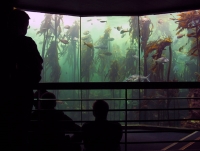
Two Oceans Aquarium
The Cape sits at the meeting place of the Atlantic and Indian Oceans, and over 3,000 sea animals from both oceans are showcased in the aquarium. They highlight the diversity of mar…
Two Oceans Aquarium
The Cape sits at the meeting place of the Atlantic and Indian Oceans, and over 3,000 sea animals from both oceans are showcased in the aquarium. They highlight the diversity of marine life found in the waters around Cape Town. The Two Oceans Aquarium is one of the city's top attractions and visitors of all ages will be interested in the variety of exhibits. They include the Predator Exhibit, which features large sharks and rays, and the mesmerising Kelp Forest Exhibit. Animals such as seals, penguins and turtles, and thousands of different fish are on display too. It is also possible embark on dives in specific tanks. The aquarium is involved in a number of research and conservation programmes.
Website www.aquarium.co.za
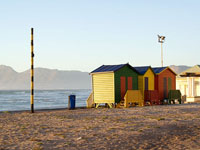
Muizenberg
A historical beachside suburb on the False Bay coast, Muizenberg is popular with families for its long beach, warm water (by Cape Town standards), beautiful views, and activities s…
Muizenberg
A historical beachside suburb on the False Bay coast, Muizenberg is popular with families for its long beach, warm water (by Cape Town standards), beautiful views, and activities such as mini-golf and waterslides. The beach is famous for its row of colourful changing houses and is a photo favourite from the mountain road far above. Muizenberg beach has also long been the best place in Cape Town for beginner surfers to learn and enjoy the waves. Its break is far less daunting and competitive than Cape Town's other surf spots. Several popular surf schools have been established at Surfers Corner in Muizenberg, accompanied by a few fun cafes and restaurants.
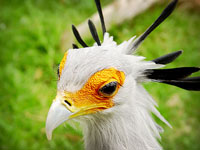
World of Birds and Monkey Park
With a population of more than 3,000 birds and over 400 different species, the World of Birds is the largest bird park in Africa. Its one-hundred-plus walk-through aviaries allow v…
World of Birds and Monkey Park
With a population of more than 3,000 birds and over 400 different species, the World of Birds is the largest bird park in Africa. Its one-hundred-plus walk-through aviaries allow visitors to encounter the birds in their natural environment. The park has other animals as well. Its mammals include foxes, monkeys, meerkats, racoons, guinea pigs, marmosets, mongooses and porcupines. Monkeys are one of the highlights. Visitors will find more than 30 of them in a large walk-through enclosure, where they can interact with the animals at certain times of day. There are also some reptiles such skinks, iguanas, terrapins and tortoises. The park also serves as a conservation site.
Website www.worldofbirds.org.za
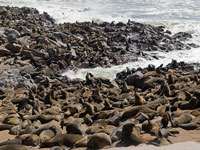
Seal Island
Seal Island visitors can glimpse of these wonderful animals at play and at rest. Although several tiny islands off the coast are unofficially part of Seal Island, the most well-kno…
Seal Island
Seal Island visitors can glimpse of these wonderful animals at play and at rest. Although several tiny islands off the coast are unofficially part of Seal Island, the most well-known is Duiker Island. Located a small distance out from Hout Bay, boats regularly leave the docks and take passengers outside the harbour and into the ocean. From here, they can enjoy sweeping views of Hout Bay, Noordhoek, Kommetjie, and the famous Chapman's Peak. The boat stops just below the Hout Bay Sentinal, where hundreds of Cape fur seals bask on the small island in the sun. The sight is magical, if a bit pungent. Many of the boat tours use glass-bottomed vessels that allow sightings of the seals zipping about beneath the water.
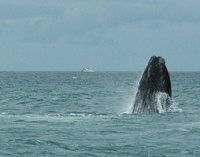
Hermanus
Locals and international tourists alike travel south of Cape Town to Hermanus. The charming seaside town is about a two-hour drive outside the Mother City, and is known for its wha…
Hermanus
Locals and international tourists alike travel south of Cape Town to Hermanus. The charming seaside town is about a two-hour drive outside the Mother City, and is known for its whale watching, as Southern Right Whales migrate through the area to nearby Walker Bay. Visitors are almost guaranteed a sighting of these gentle giants from the steep cliffs of Hermanus between September and October, and the Two Oceans Whale Festival draws big crowds over this period. There are also opportunities to view other wildlife, including dolphins, seals, penguins, and Great White Sharks. The town itself offers many other activities, including browsing shops and restaurants in the quaint downtown area to venturing further afield to wine farms and beaches and neighbouring towns like Stanford, Gansbaai, and Caledon.
Website www.hermanus.co.za



